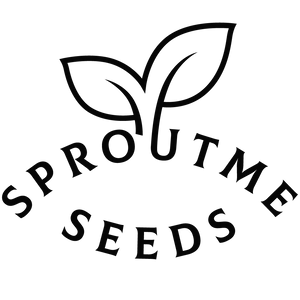Chervil
Chervil, also known as French parsley, is a delicate and flavorful herb commonly used in French cuisine. Its lacy leaves and subtle anise-like flavor make it a popular choice for garnishes, salads, and soups. Growing chervil in your garden or containers allows you to enjoy its fresh, aromatic leaves throughout the growing season.
Preparing for Growing:
- Selecting a planting location: Choose a partially shaded location for growing chervil, as it prefers cooler temperatures and protection from the hot afternoon sun.
- Soil preparation: Prepare well-draining, fertile soil rich in organic matter. Chervil thrives in soil with a pH between 6.0 and 7.0.
- Purchasing or preparing containers/pots: If growing chervil in containers, choose pots with good drainage and fill them with a quality potting mix.
Starting from Seeds Indoors:
- Seed preparation: Chervil seeds do not require any special treatment before planting.
- Choosing suitable pots/containers: Use shallow trays or seedling pots filled with seed starting mix.
- Sowing and caring for seeds indoors: Plant chervil seeds shallowly, about ¼ inch deep, and keep the soil consistently moist. Provide indirect light and maintain a temperature around 65-70°F for germination, which typically occurs within 10-14 days.
- Transplanting to larger containers if necessary: Once seedlings have developed several sets of true leaves, transplant them into larger containers or directly into the garden bed.
Starting from Seeds Outdoors:
- Soil preparation: Prepare the garden bed by removing weeds and loosening the soil to a depth of 6-8 inches. Incorporate compost or aged manure to improve soil fertility.
- Selecting appropriate timing and method for outdoor sowing: Direct sow chervil seeds outdoors in early spring or late summer. Scatter the seeds lightly over the soil surface and cover them with a thin layer of soil.
- Caring for seeds outdoors: Keep the soil consistently moist until seeds germinate. Thin seedlings to allow proper spacing, typically 6-8 inches apart.
Growing in Containers/Pots:
- Selecting suitable plants for containers: Choose compact or dwarf varieties of chervil for container growing.
- Container and soil preparation: Use well-draining containers with adequate drainage holes. Fill them with a high-quality potting mix enriched with compost.
- Sowing or transplanting plants into containers: Plant chervil seeds or seedlings in containers, ensuring they have enough space to grow and receive adequate sunlight.
- Caring for container plants: Water container-grown chervil regularly to keep the soil evenly moist. Provide some shade during hot afternoons to prevent wilting.
Transplanting to Garden:
- Soil and planting site preparation: Choose a partially shaded location with well-draining soil. Prepare the planting area as described earlier.
- Correct timing and method for transplanting: Transplant chervil seedlings into the garden bed after the danger of frost has passed. Space them 6-8 inches apart in rows spaced 12 inches apart.
- Post-transplant care: Keep the soil evenly moist and mulch around plants to retain moisture and suppress weeds.
Plant Care:
- Watering: Keep the soil consistently moist but not waterlogged. Water chervil plants at the base to prevent foliage diseases.
- Fertilizing: Chervil generally does not require heavy fertilization. However, you can side-dress plants with compost or a balanced fertilizer in mid-season if growth appears slow.
- Weeding: Keep the area around chervil plants free of weeds to reduce competition for nutrients and moisture.
- Pest and disease management: Chervil is relatively pest and disease resistant but may occasionally suffer from aphids or fungal diseases. Use organic pest control methods as needed.
Harvesting:
- Determining when plants are ready for harvest: Harvest chervil leaves as needed once the plants have reached a height of 6-8 inches. Snip off individual leaves or cut entire stems near the base.
- Harvesting and storage guidelines: Use fresh chervil leaves immediately for the best flavor. Alternatively, store them in a plastic bag in the refrigerator for up to a week. Chervil can also be dried or frozen for longer-term storage.
When to Start from Seeds by USDA Plant Hardiness Zones:
- Start chervil seeds indoors 6-8 weeks before the last expected frost date in your area. Transplant seedlings outdoors after all danger of frost has passed.
Fast Facts:
- Planting depth: ¼ inch
- Seed spacing: Scatter seeds lightly over the soil surface
- Plant spacing: 6-8 inches apart
- Number of seeds per pot/container: 2-3 seeds per pot
- Water preferences: Consistently moist soil
- Sun preferences: Partial shade
- Soil type and other important factors: Well-draining, fertile soil with a pH of 6.0-7.0.
- Companion Planting: Chervil attracts beneficial insects and can be planted near vegetables to improve pollination and pest control.
- Temperature Preference: Cool-season herb, prefers temperatures between 60-70°F.
- Days to Germination: 10-14 days
- Days to Harvest: 60-70 days after germination, depending on growing conditions.







